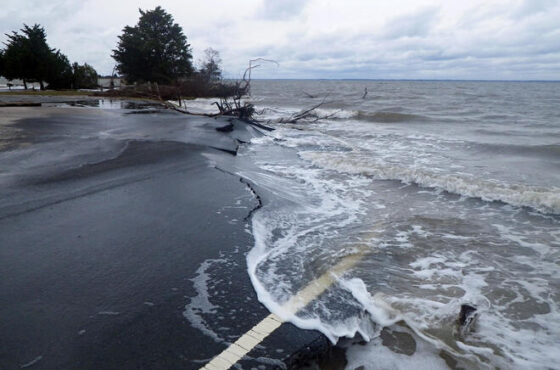California’s Best Low-Income Climate Program is in Jeopardy
Published by the Natural Resources Defense Fund

There’s something state leaders can do today to save Californians money on their energy bills, slash carbon emissions in California, and slow down the rate of utility disconnection – use proceeds from the cap-and-trade program to fund the Low-Income Weatherization Program (LIWP) and ensure this successful program – which especially serves low-income renters living in single-family and multifamily dwellings – is funded long-term.
California seems prosperous if talking about the state economy overall, as Governor Brown did in his State of the State address. But since the Great Recession, California’s poorest citizens have only gotten poorer, their incomes dropping by 25 percent. With less money in their pockets, more Californians are having their utilities shut off because they can’t afford their high energy bills.
Gov. Brown and other state leaders have led on clean air and clean energy, passing Senate Bill 598 in 2017, which “aims to reduce shutoffs, which threaten the health and safety of many” by 2024. They know that Californians living within modest means need help keeping the lights on, but this new law won’t produce real change for years and shouldn’t be seen as the only tool in our toolbox.
 Allocation History for the Low-Income Weatherization Program
Allocation History for the Low-Income Weatherization Program Despite its broad support and success in reducing Californians’ energy bills, LIWP currently requires annual allocation in the budget from cap-and-trade proceeds and has difficulty being renewed for funding each year. In the Governor’s proposed budget, it is now zeroed out.
Without renewed leadership to support this valuable program, it isn’t unreasonable to expect utility disconnections will continue to grow.
Understanding the Low-Income Weatherization Program
As a whole, LIWP is the only program in the state that is specifically designed to overcome barriers to clean energy access for low-income Californians in communities disproportionately affected by pollution. This is the group of Californians that cap-and-trade proceeds are meant to support most.
This program offers solar panels, solar hot water heaters, heat pump technology, and energy efficiency measures to California families living on low incomes in multifamily buildings and single-family homes alike, albeit through different tracks, which are funded and administered separately based on housing type. The savings achieved by LIWP require long-term planning and execution of deep building retrofits, which can be a multi-year process, and therefore need an ongoing reliable source of funding.
Combined with the dual nature of the multifamily and single-family subprograms, the long time horizons for projects make it seem as though the whole LIWP program is currently over-funded with money on the books waiting to be spent. That’s not the case; funds dedicated to the single-family subprogram and committed to expenditure in future years are not available for use by the multifamily subprogram.
Even More Savings Are in the Pipeline
It takes time to grow an idea into a successful program, and it’s a mistake to let one with a proven track record die by not continuing funding. It has taken three years for LIWP to build an exemplary implementation model with a multifamily component which will save Californians who are renting their homes nearly $50 million in utility bills with the projects already completed.
A further testament to LIWP’s success and reputation is its long waitlist. More than 300 buildings representing over 18,000 homes are currently in line to be enrolled in its multifamily component alone, but, without more continuous support, the program is in jeopardy. Again.
Currently, no other funding sources for these kinds of building upgrades exist outside of cap-and-trade proceeds, and LIWP – with all of its success in reducing energy bills and providing better health and comfort to its thousands of participants to date – deserves a more sustainable funding mechanism besides cap-and-trade and the possibility of re-allocation of unspent funds from other programs.
Sustainable Funding for Clean Energy
As Gov. Brown said in his final State of the State remarks, we have so much more work to do even as his term comes to an end. We call on the Governor and the legislature to make good on the promise to use cap-and-trade proceeds to benefit the Californians who need it most. The Governor should swiftly propose funding for LIWP in this year’s budget and state legislators should act to secure more reliable funding so that it’s not just the wealthiest Californians who have comfortable, safe, and healthy homes with clean energy technology.
Related Blog Posts
Read the full article at: https://www.nrdc.org/experts/isaac-sevier/californias-best-low-income-climate-program-jeopardy





